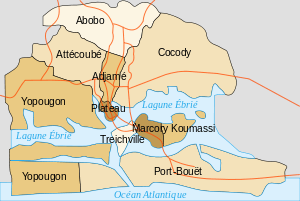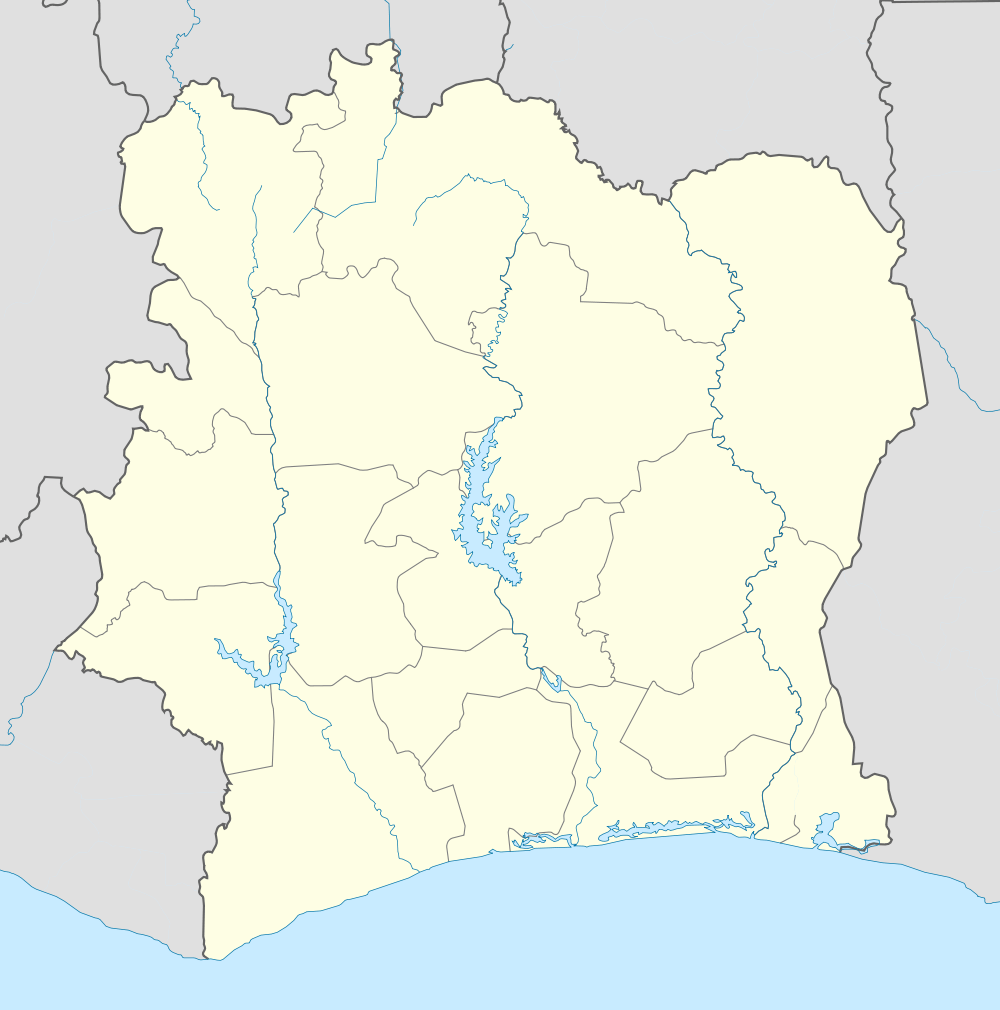Attécoubé
| Attécoubé | |
|---|---|
| Suburb and urban commune | |
|
| |
 Location in Côte d'Ivoire | |
 Attécoubé Location in Côte d'Ivoire | |
| Coordinates: 5°29′17″N 4°1′56″W / 5.48806°N 4.03222°WCoordinates: 5°29′17″N 4°1′56″W / 5.48806°N 4.03222°W | |
| Country |
|
| Region | Lagunes |
| Department | Abidjan |
| Time zone | GMT (UTC+0) |
Attécoubé (Ebrié: Abidjan Te) is a northwestern commune of Abidjan, Ivory Coast. It is situated to the northwest of Abidjan's central Plateau district,[1] overlooking the baie du Banco. Attécoubé has a total area of 68.2 square kilometres (26.3 sq mi), 40 square kilometres (15 sq mi) of which is covered by forest and 5 square kilometres (1.9 sq mi) by Ébrié Lagoon. The district forms part of Banco National Park.[2]
The population was 164,751 in 1988, and 214,638 in 1998.[3] At the beginning of the colonial era, Attécoubé was exploited for its timber by the French. Its mayor, elected in municipal elections in March 2001, is Danho Paulin.
Districts
Attécoubé is separated into almost three dozen districts. These include:
Right bank
- Agban Attié
- Attécoubé 3
- Djéné Ecaré
- Santé Ecole
- Santé 3 Résidentiel 1
- Santé 3 Résidentiel 2
- Santé 3 Extension
- Fromager
- Déindé
- Asapsu
- Awa
- Jean-Paul 2
- Santé Carrefour
- Akélié
- Lackman
- Douagoville
- Camp Douane
- Jérusalem Résidentiel
- Jérusalem 1
- Jérusalem 2
- Jérusalem 3
Left bank
- Sebroko
- La Paix
- Lagune
- Espoir
- Mosquée
- Saint-Joseph
- Ecole
- Gbebouto
- Cantonnement Forestier
- Cité Fairmont 1
- Cité Fairmont 2
- Ecole Forestière
- Bidjanté
References
- ↑ Gaston, Elaine (January 20, 2015). "Ark. church explores partnering with Ivorian believers". Baptist Press. Retrieved 13 February 2015.
- ↑ Auzias, Dominique; Labourdette, Jean-Paul (26 November 2008). Côte d'Ivoire 2009-2010. Petit Futé. p. 171. ISBN 2-7469-2408-0.
- ↑ Appessika, Kouamé (2003). "The case of Abidjan, Ivory Coast". UNDERSTANDING SLUMS: Case Studies for the Global Report on Human Settlements 2003, Bureau National d'Etudes Techniques et de Development. p. 3. Retrieved 13 February 2015.